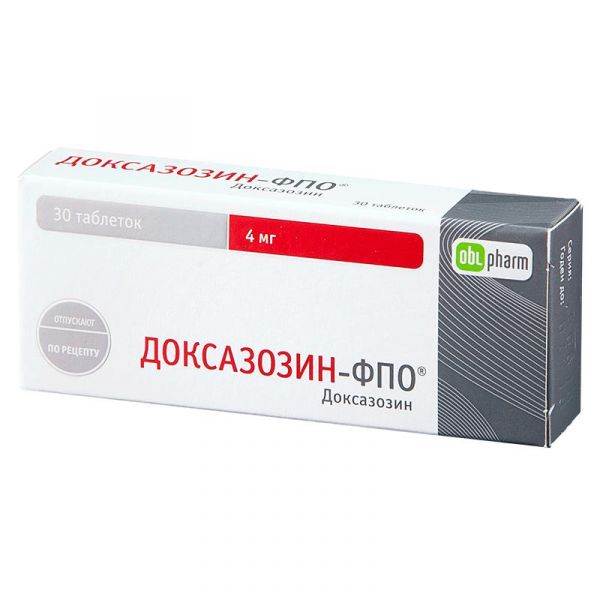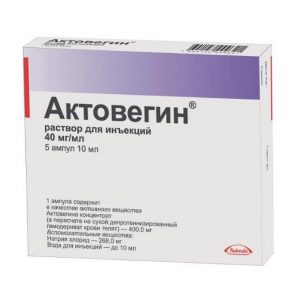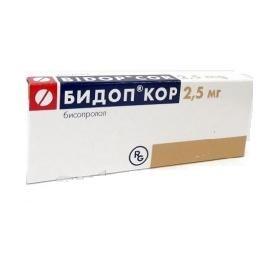Description
Latin name
Doxazosin
Release form
Tablets.
packaging 30 pcs packaged.
Pharmacological action
Pharmacotherapeutic group: Anti-inflammatory agent. Immunomodulating agent. The mechanism of action is due to inhibition of synthesis and damage to the DNA structure of pathogens.
Pharmacokinetics: Absorption is high, bioavailability is about 100%. Communication with plasma proteins – 12%. The maximum concentration in blood plasma is achieved after ingestion of 2 g – 40-51 μg / ml, after 24 hours – 11-19 μg / ml, after 72 hours – 1 μg / ml. The maximum concentration is reached after 2 hours. Distribution volume – 50 l . Penetrates through the blood-brain barrier, the placenta. It is excreted in breast milk within 72 hours after administration. It is metabolized in the liver with the formation of pharmacologically active hydroxylated derivatives that inhibit the growth of anaerobic microorganisms and can enhance the effect of tinidazole. The elimination half-life is 12-14 hours. It is removed with bile – 50%, capable of changing the liver metabolism, the biotransformation of the drug may be disrupted. The main excretion is through the intestines (63-65% in the form of metabolites and about 5% – unchanged).
Kidneys display about 10%. A study of the pharmacokinetics of doxazosin in elderly patients and patients with kidney disease did not reveal significant pharmacokinetic differences.
Indications
· Benign prostatic hyperplasia: both in the presence of arterial hypertension and at a normal level of blood pressure.
· Arterial hypertension (as part of combination therapy).
Contraindications
Hypersensitivity to doxazosin and other quinazoline derivatives (prazosin, terazosin) or to other components of the
drug Tendency to orthostatic hypotension
hypertension (for patients with benign prostate hypertension) pathways, chronic urinary tract infections, bladder stones
Lactose intolerance, lactase deficiency or glucose-galactose malabsorption
Period l
acts Under 18 years of age (efficacy and safety not established)
As monotherapy in patients with either an overflowing bladder or anuria, with or without progressive renal failure.
Caution: Pulmonary edema due to aortic or mitral stenosis
Right-sided heart failure due to pulmonary embolism or exudative pericarditis pravostoronnyaya serdechnaya nedostatochnost vsledstvie legochno embolii ili ekssudativny perikardit
Left ventricular heart failure with low filling pressure
Concomitant use of phosphodiesterase-5 inhibitors (sildenafil, vardenafil, trandalafil)
Intraoperative instability syndrome of the iris (narrow pupil syndrome) srdlp function.
Use during pregnancy and lactation
Pregnant women can take the drug only when the benefits to the mother outweigh the potential risk to the fetus / baby.
There is no data on the penetration of doxazosin into breast milk, therefore, nursing mothers are advised to stop feeding during the treatment with doxazosin.
Composition
1 tablet contains:
active ingredient:
doxazosin mesylate 1.22 mg / 2.44 mg / 4.88 mg (in terms of doxazosin
1 mg / 2 mg / 4 mg)
excipients: srdlp monohydrate 80.18 mg /
90.16 mg / 180.32 mg
calcium phosphate 17.0 mg / 35.0 mg / 70.0 mg
povidone K30 0.4 mg / 0.6 mg / 1.2 mg
sodium lauryl sulfate 0, 2 mg / 0.3 mg / 0.6 mg
calcium stearate 0.5 mg / 1.0 mg / 2.0 mg
talc
0.5 mg / 0.5 mg / 1.0 mg
Dosage and administration
Inside, once a day (morning or evening), regardless of food intake, without chewing and drinking plenty of water.
Patients with hepatic insufficiency require lower doses due to a slowed metabolism of the drug.
If the patient has forgotten to take the drug at the usual time, he should take the appropriate dose of the drug as soon as possible. If the time is right for the next dose, then only it should be taken (without doubling the dose of the drug). It is important to take the drug regularly. If the patient has not taken the drug for several days, then a new therapeutic course should be started with the lowest dose.
BPH: The initial dose is 1 mg of doxazosin per day. The patient should take the first dose in the evening before bedtime. Depending on the urodynamic indicators and the presence of symptoms of BPH, the dose can be gradually increased at intervals of 1-2 weeks to 2 mg, 4 mg and 8 mg per day. The recommended maintenance dose is 2 to 4 mg per day. The maximum daily dose is 8 mg.
After achieving a stable therapeutic effect, the dose is usually reduced (the average therapeutic dose with maintenance therapy is usually 2-4 mg per day).
hypertension: the initial dose of doxazosin is 1 mg per day at bedtime. After taking the first dose, the patient should be in bed for 6-8 hours. This is required in connection with the possibility of developing the phenomenon of “first dose”, especially pronounced against the background of previous administration of diuretics. If the therapeutic effect of the drug is insufficient, the daily dose can be increased to 2 mg in 1-2 weeks.
Subsequently, every 1-2 weeks the dose can be increased by 2 mg. In the vast majority of patients, the optimal therapeutic effect is achieved at a dose of 8 mg per day. The maximum daily dose is 16 mg.
Side effects of
The frequency of adverse reactions when using the drug Doxazosin is given below in accordance with the generally accepted classification:
very often ( 1/10) often ( 1/100,
From the cardiovascular system: often – hypertension (including orthostatic), palpitations, tachycardia infrequently – angina pectoris, myocardial infarction very rarely – bradycardia, rhythm disturbances, flushing of blood to the skin of the face, peripheral edema.
From the central and peripheral nervous system: often – drowsiness, dizziness, scalp infrequent pain – stroke, hypesthesia, fainting, tremor, agitation, depression, anxiety, insomnia, nervousness are very rare – paresthesia, postural dizziness.
On the part of the sensory organs: often – vertigo infrequently – tinnitus is very rare – blurred visual perception, narrow pupil syndrome.
From the digestive system: often – abdominal pain, dyspepsia, dry oral mucosa infrequently – constipation, bloating, vomiting, diarrhea, increased activity of “liver” enzymes, loss of appetite, anorexia is very rare – hepatitis, cholestasis, jaundice.
From the respiratory system: often – bronchitis, cough, shortness of breath, rhinitis, dry nasal mucosa infrequently – nosebleeds very rarely bronchospasm.
From the side of hematopoiesis: leukopenia, thrombocytopenia.
From the musculoskeletal system: often – back pain, myalgia is not often – arthralgia is rare – cramps, weakness in the muscles.
From the skin: often – itching infrequently – skin rash very rarely urticaria, allopecia, purpura.
From the genitourinary system: often cystitis, urinary incontinence not often – dysuria, increased frequency of urination, hematuria, impotence, gout rarely – polyuria is very rare – increased diuresis, urination disorders, nocturia, gynecomastia, priapism, retrograde ejaculation.
General reactions: often – asthenia, chest pain, malaise infrequently – pain, facial swelling, weight loss is very rare – allergic reactions, fatigue.
Drug interaction
Doxazosin enhances the antihypertensive effect of antihypertensives (when used in combination with them, dose adjustment is required).
No adverse interaction was observed with concomitant use of doxazosin and thiazide diuretics, furosemide, beta-blockers, slow calcium channel blockers, angiotensin-converting enzyme inhibitors, antibacterial agents, hypoglycemic agents for ingestion, indirect anticoagulants and uricosuric agents.
The drug has no effect on the degree of binding to the plasma proteins of digoxin, phenytoin.
When co-administered with inducers of enzymes of microsomal oxidation in the liver (ethanol, barbiturates, phenylbutazone, tricyclic antidepressants), it is possible to increase the effectiveness of doxazosin, with inhibitors (cimetidine) – a decrease. Nonsteroidal anti-inflammatory drugs (NSAIDs), especially indomethacin, estrogens (fluid retention) and sympathomimetic drugs can reduce the hypotensive effects of doxazosin.
Eliminating the alpha-adrenostimulating effects of epinephrine, can lead to tachycardia and hypotension.
Concomitant use with selective phosphodiesterase-5 inhibitors (sildenafil, tadalafil, vardenafil) can lead to the development of arterial hypotension.
overdose
Symptoms: marked decrease in blood pressure, sometimes accompanied by fainting.
Treatment: gastric lavage, activated charcoal intake. The patient should be placed on his back and his legs raised.
When a marked decrease in blood pressure is carried out anti-shock measures – replenish the volume of circulating blood, if necessary, appoint vasopressors.
Hemodialysis is ineffective.
Storage conditions
At a temperature not exceeding 25 ° C.
Keep out of the reach of children.
Expiration
3 years. Do not use after the expiry date stated on the packaging.
Deystvuyuschee substances
doxazosin
Pharmacy vacation
Po
Dosage form
Dosage form
Tablets
Obolenskoye FPP, Russia




